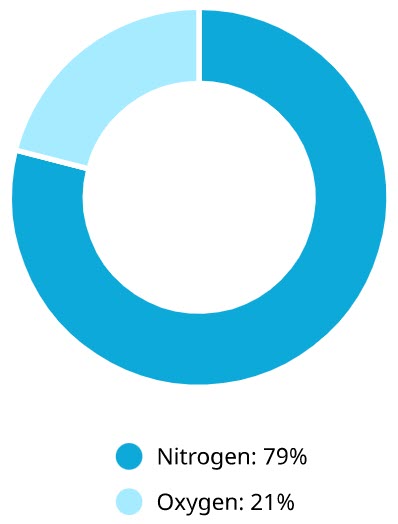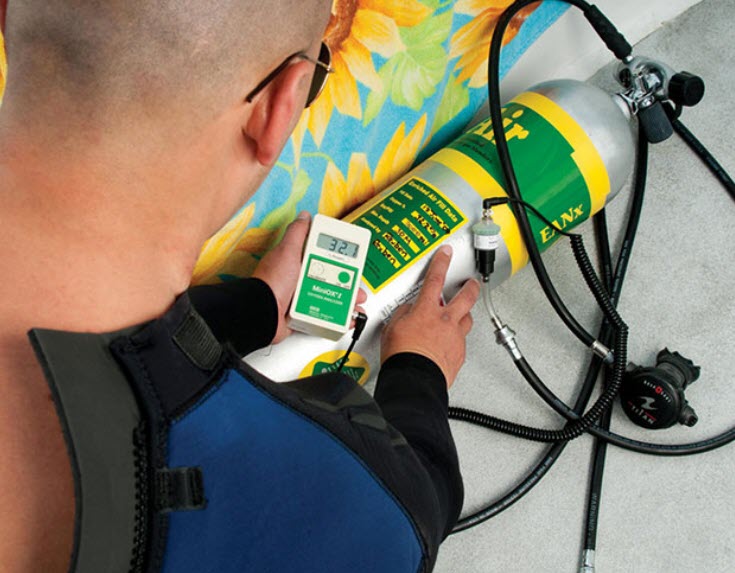Lesson 107
Air vs Oxygen Is there a difference? Let's discuss.
By the end of this section, I should be able to answer these questions:
1. What component gases make up air?
2. For practical purposes, what percent of each of the component gases does air consist of?
3. To what four diving related issues does the makeup of air relate?
4. How does using enriched air nitrox affect the component gases that make up air?
The Air You Breathe
As a recreational diver underwater, you breathe air. Other than being specially filtered for scuba, it is the same as the air you’re breathing now. Air is actually a mix of several gases. The nature of this mix is important for some of the ways diving can affect you, so let’s begin by looking at the gases that make up air.

The component gases of air, in order of abundance, are nitrogen, oxygen and more than a dozen gases in very small amounts. These trace gases make up less than one percent of air, so for most practical purposes related to diving, we ignore them and consider air to be 79 percent nitrogen and 21 percent oxygen.
Four Diving Issues That Relate to Component Gases
To review, air can be considered a single gas with respect to the depth-pressure-volume-density relationships you learned in Section One. As you recall, these relationships explain (among other things) why you need to equalize, why you use more air the deeper you dive, why buoyancy changes as you change depth, and why you must breathe continuously, never holding your breath to avoid lung overexpansion injuries. These apply identically in commercial and technical diving that involve breathing gases other than air.
However, there are four issues in diving that relate to the component gases in air:
- Oxygen toxicity
- Contaminated air
- Decompression sickness
- Gas narcosis
We’ll look at oxygen toxicity, contaminated air and decompression sickness in this section. We’ll look at gas narcosis in Section Five.

Enriched Air Nitrox
Enriched air nitrox (EANx) has the same component gases as air, but the proportions differ. EANx is any blend of oxygen and nitrogen with 22 percent or more oxygen. The rest is nitrogen. Common blends in recreational diving are 32 percent and 36 percent oxygen. Tec divers use EANx with even higher proportions of oxygen.
As you will see, increasing the oxygen content and decreasing the nitrogen content has advantages and disadvantages with respect to decompression sickness and oxygen toxicity problems. Many PADI Open Water Divers qualify to use EANx (enriched air nitrox) by taking the PADI Enriched Air Diver course shortly after completing this course. Or, at your instructor’s discretion, you can start learning to use EANx during the PADI Open Water Diver course (ask your instructor for details).
knowledge review and quiz
Comments

I'll take you diving!
Copyright © Larry Wedgewood Scuba Instruction All Rights Reserved








